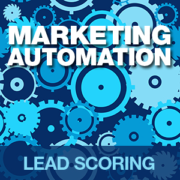Account Based Marketing vs Inbound Marketing
Recent focus on #ABM – Account Based Marketing – has spurred a lot of conversation about how ABM differs from Inbound Marketing. Our view is that these descriptive labels essentially are all attacking the same challenge of driving sustainable revenue growth. ABM is more focused on engaging, converting and expanding an account – a typical B2B sales and marketing challenge. Inbound Marketing is a more generic process of lead generation and lead conversion though an attraction principle – using content and permission marketing to attract leads (people) to your brand or website for nurture and sales conversion.
We focus on the concept of Revenue Architecture – a customized approach to align your business model with your revenue generation model and to unify the sales and marketing process.
Here are some ways that account based marketing and inbound marketing are different.
Account Based Marketing
ABM refers to a strategic approach to marketing where an organization uses its resources to target specific companies or ‘accounts’. This is typical of what many B2B sales teams already are thinking about as their core day-to-day strategy. Yet, this is a shift from what we often see from marketing, as many marketing programs are targeting specific customers – or people – rather than specific accounts. The buyer persona is a critical element of both inbound and ABM. Account based marketing still targets people – but these are people strategically targeted within an account. ABM is more of an orchestrated approach to target a company or account using a variety of techniques including personalization, customization, IP advertising and innovative content marketing strategies and campaigns.
Inbound Marketing
Inbound marketing refers to the use of content, social media, and website landing pages and calls to action to attract and convert leads and nurture prospects. Blogs, eBooks, videos, white papers, email newsletters, podcasts, and SEO are used with inbound marketing to help prospective leads find your business, visit your website and convert as a lead. The purchase funnel serves as the foundation for inbound marketing. The purchase funnel refers to the journey a customer takes from awareness to an eventual product or service purchase. Content and activities are mapped across this journey.
Inbound marketing contrasts with outbound marketing in that inbound marketing involves marketing activities that reel the visitors in while outbound marketing involves the marketers themselves getting the attention of prospective customers by pushing out communications, advertisements and emails to leads. Outbound marketing “buys attention” while inbound marketing focusing on “earning attention”. ABM on the other hand, uses both inbound and outbound tactics, but all in an orchestrated way around the account.
What are some Differences?
One difference between inbound marketing and account based marketing is the scale in terms of customer targeting. Account based marketing focuses on targeting specific, existing potential accounts including multiple contacts. It is a highly congruent process between sales and marketing and it is driven by the account marketing plan. Inbound marketing focuses on appealing to specific people based on personas to attract, influence and convert as possible into leads. Account based marketing is a set of orchestrated activities around a specific account.
Revenue Architecture: The Customized Approach
Deciding to use account based marketing or inbound marketing should depend on your business model. Realistically, for most B2B companies, there will be elements of both ABM and Inbound methods. The approach we recommend is to design a “revenue architecture” that specifically maps your revenue execution engine with your business model. To help you do this, we identified 30 dimensions of the revenue architecture (across strategy, systems and programs layers) that you can map across your business model. Imagine a horizontal continuum from, for example, selling a “commodity product” to selling “brains for hire”. Along this continuum are a several positions, each with distinct management styles, measurement structures, technology systems and campaign archetypes.
It is critical that you get this right. Where is your business on this continuum? Are you shifting from one business model to another? Let your business model determine the revenue architecture and the role of ABM and Inbound strategies.









Leave a Reply
Want to join the discussion?Feel free to contribute!